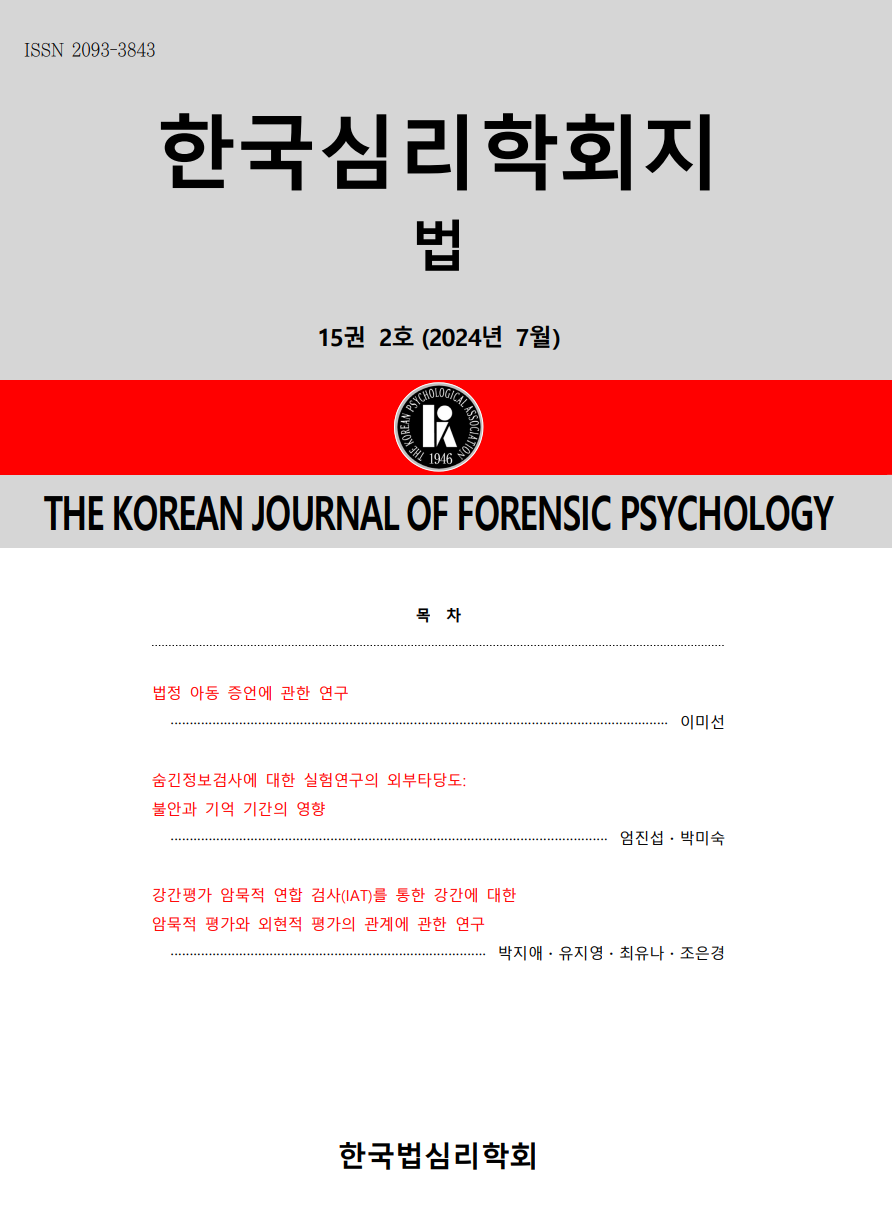open access
메뉴
open access
메뉴 ISSN : 2093-3843
ISSN : 2093-3843
In this study, the PPI-R was used to categorize the subtypes of psychopathic tendencies of criminals. The PAI results for each type were then used to determine the personality traits associated with. A total of 555 offenders(415 males, 140 females)were investigated. Using the LPA of their PPI-R results to select the subgroup, the BCH was employed to determine whether personality traits from the PAI results varied by group. The moderating effect analysis was then used LPA to identify the personality factors that regulate the impact of psychopathic tendencies on antisociality, and the Johnson-Neyman approach was employed to determine the cutting point. Lastly, to create the SORT-TEST, ROC, random forest, and confirmatory factor analysis were carried out. As a result, first, four subgroups were extracted. Group 1: Self-overvaluation, Group 2: General offender, Group 3: Controlling domination, and Group 4: Impulsive self-centered. Second, when comparing the PAI personality traits for each group, group 4 scored highest on the clinical scale. A high DOM was present in Groups 1 and 3. The RXR was lowest in Group 4. Third, the study of the moderating effect on antisociality by group revealed that Group 1 exhibited significant moderating effects in SOM, ANX, and ARD, Group 2 demonstrated ANX and BOR, Group 3 demonstrated DOM, and Group 4 demonstrated the majority of the variables. Fourth, The SORT-TEST of 30 questions was developed. According to the findings, several therapeutic strategies are required depending on the traits of psychopathic tendencies. Finally, the study’s limitations and implementation strategies were presented.